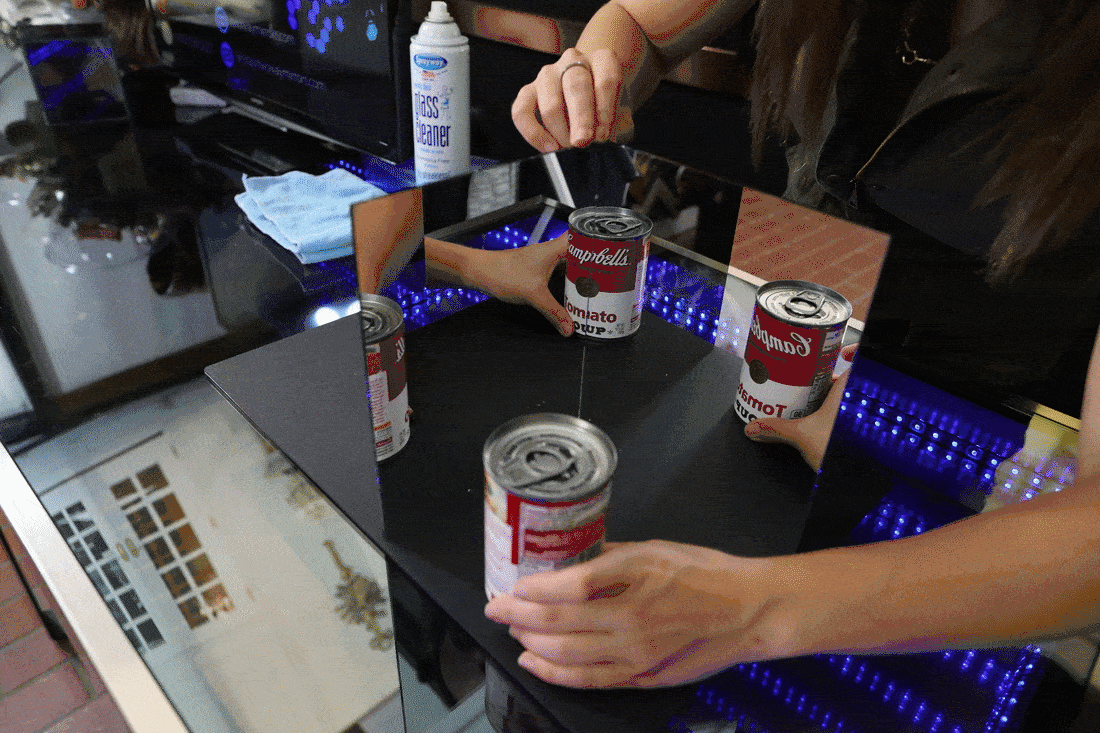What is a Non-Reversing Mirror?
A non-reversing mirror, also known as a True Mirror, allows you to see something as though you were looking directly at it, instead of its mirrored image. This is most commonly depicted when you have a t-shirt on in front of a mirror and cannot read it. These are most likely seen in museums or homes where it becomes a conversational centerpiece.

The Science Behind a Non-Reversing Mirror
To make a non-reversing mirror, you need to join two glass first surface mirrors together. The use of a glass first surface mirror is critical in getting a seamless reflection because in the end you will be looking straight into the corner of the mirror to see the non-reversing reflection.
“Have you ever seen your true self, the way others see you?”
True Mirror – the Company
True Mirror took this concept and turned it into a full fledged business. They hand craft true mirrors to perfection in framework that allows you to look forward and see absolutely no line where the two mirrors join. I absolutely love their products because they focus on the emotional impact of seeing your ‘true reflection’ – to the point of videotaping the responses of customers that walk in to their showroom!
Reactions to True Mirror Magic
Our visual appearance is taken for granted so often, the reaction to seeing yourself in this mirror is priceless! Finally, your psyche gets a taste of what every other person visually sees when they look at you. The desire to see ones self in a mirror is a phenomenon experienced for generations, dating back to the stone age. So this one Youtuber went out to the streets to share this with everyone! Check out their reactions below:
How to Select a Glass First Surface Mirror
When creating a true mirror, you will want a glass first surface mirror with an enhanced aluminum mirror coating. I recommend the 6mm thickness because it will provide better surface flatness which is super important for making a seamless connection between the two mirrors. If you are putting the two mirrors inside of a box, one of the mirrors will need to be slightly larger than the other so you can lay the other mirror perpendicular to eliminate the seam. If you are doing a frame-less non-reversing mirror, you can simply use an l-bracket to connect the two mirrors.
How to Build a Non-Reversing Mirror
- Glass First Surface Mirror – QTY 2
- Box or L-bracket
- Tape or Glue to Hold Mirrors in Place
First I recommend selecting a box that you like. It can really be any size and then the box size will determine the glass first surface mirror sizes you need. For this demonstration I went to the Dollar Tree and snagged up a simple small box. To create a full length version you will want a long, thin box.
Next you will want to get the dimensions of the “bottom” of the true mirror and get out a sketch pad to figure out what the first surface mirror dimensions will be. Take the bottom of the box and draw two lines that come together to form a right angle. Extend one of those lines all the way through the box – one mirror will be larger than the other. The other mirror dimension will simply be the height of the inside box.
Next we will secure the mirrors inside the box with black mirror mastic glue. The glue allows a little bit of squish that it needs to fully attach the corners in the back. If you have access to the back left corner behind the second first surface mirror, you can reinforce the mirror with an l-bracket. Otherwise, gluing the mirror in place onto the box will work as well.

[…] across this article Seeing Yourself As Others See You by Steve Fentress. He writes about the True Mirror, a phenomenon that our reflections in the regular mirrors are skewed and that we need a ‘True […]